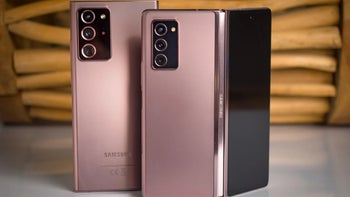Samsung's Iris Ring tech is a Galaxy Note 20 Ultra and Z Fold 2 exclusive
We may earn a commission if you make a purchase from the links on this page.

Initially, Samsung called its punch-hole screen design the Infinity-O display, what with the minimizing of borders like in previous Infinity designs, and the piercing of the screen to accommodate a front-facing camera without the need for a top bezel protrusion a.k.a. a notch.
The Galaxy Note 20 Ultra, however, and, now, the Galaxy Z Fold 2, shipped with centered punch holes which are visibly smaller than Samsung's previous Infinity-O design editions. Rightfully so, as they turn out to be made with a new laser-cutting tech that is unique for Samsung's top-shelf OLED panels, and which the company has now dubbed Iris Ring.
Why Iris? Well, a certification by Chicago's Underwriters Laboratories (UL) has granted a "Hole Area Clarity" stamp for no visible color differences in the areas around the hole. Samsung's cutting method is apparently so precise, that the adaptive 120 Hz OLED panels on the Note 20 Ultra and Galaxy Z Fold 2, measured a Delta E score below 2 for the display area immediately surrounding the punch hole.
What this Delta E value means, if you are familiar with PhoneArena's display benchmark testing, is that there are no discernible color differences between the main display area, and the circle bordering on the hole, hence the Iris Ring title.
Now, Samsung claims that it put so much effort to make the punch-hole displays color presentation uniform across the board because it is very important on 5G phones but whether it means the streaming of high-def, high dynamic range video made possible with 5G, or something else, remains to be heard. In any case, we can expect more "Iris Ring" phones from Samsung going forward, and the design is apparently here to stay.










Things that are NOT allowed: